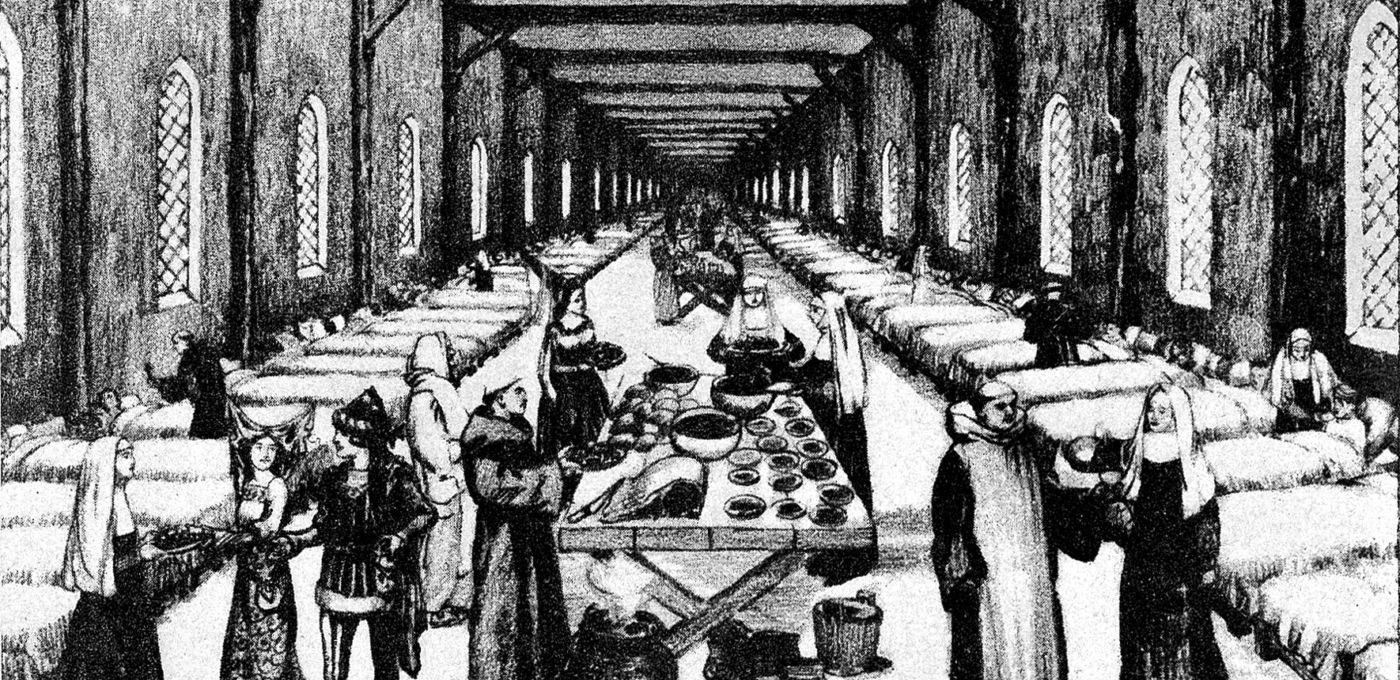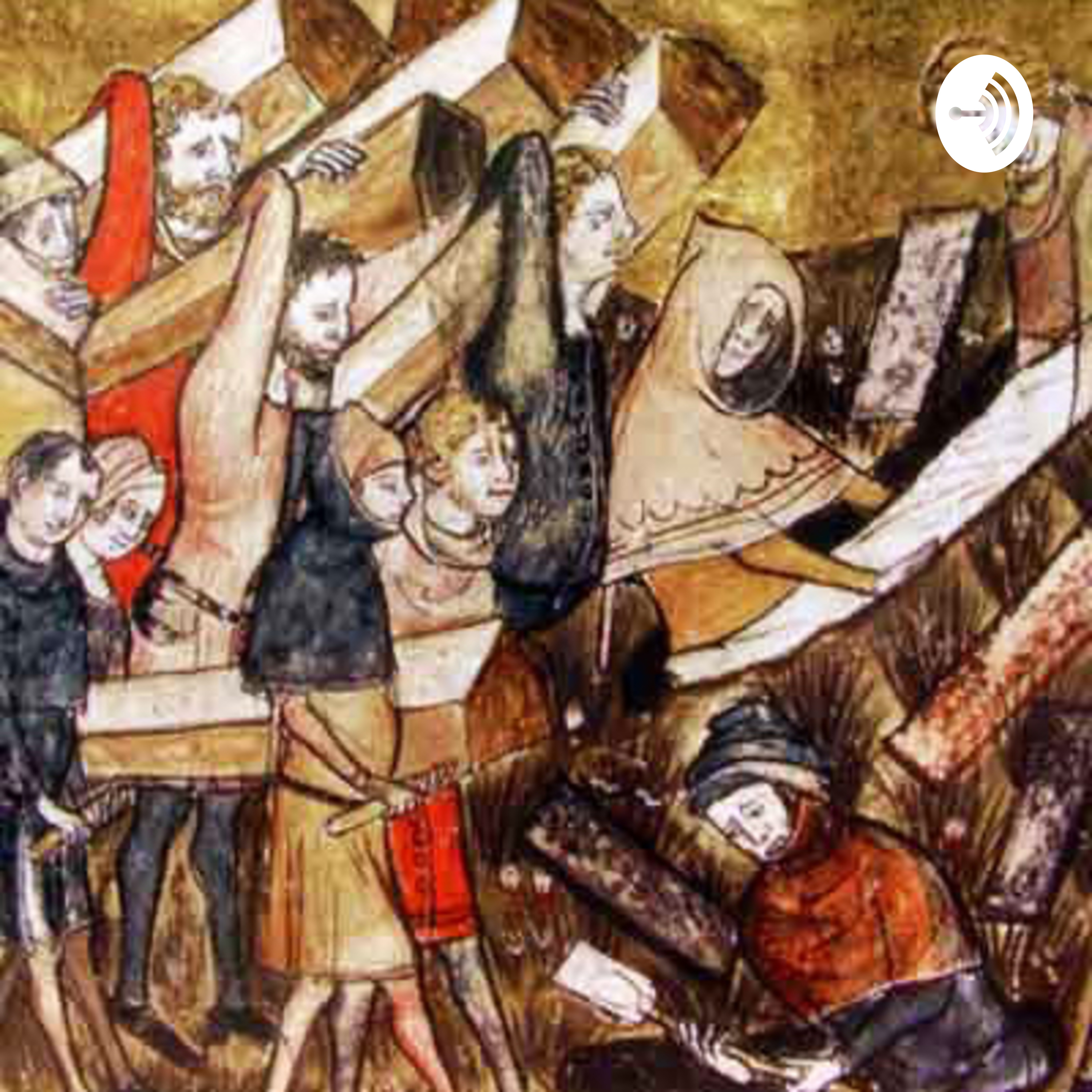This topic takes on average 55 minutes to read.
There are a number of interactive features in this resource:
 History
History
 Biology
Biology
The fall of the Roman Empire meant that many of their public hygiene practices were soon lost. The middle ages in Europe saw most people without access to clean drinking water, regular bathing or a sewage system. This meant that health conditions were often worse than during the Roman occupation of earlier centuries. Most people were farmers and food was not as plentiful as today. Starvation and disease were common.

A medieval hospital. Patients are given food and cared for by monks and nuns.
Medicine in the middle ages was dominated by religion. Sickness was believed to be a punishment from God for sins committed and the only way to cure someone was to pray for their forgiveness. Doctors in the middle ages were usually priests or other religious scholars. Hospitals often sprang up in monasteries and other religious establishments. The patients were given food and comforted by religious nursing staff but little else was done to cure their illness.
Traditional cures, using herbal remedies and potions were seen as witchcraft and outlawed by the church. Laws stated that only trained and registered people could practice medicine. Schools and universities began to educate wealthy individuals in religion, the arts, law and medicine. Generally men, and occasionally a few women, were trained and allowed to become physicians. As universities developed, more and more came from a non-religious background and eventually it was not necessary to be a cleric to practice medicine.
Perhaps the most famous wound of all was the arrow in the eye that killed King Harold at the battle of Hastings. Surgery was a crude practice during the middle ages but operations such as amputations, setting broken bones, replacing dislocations and binding wounds were relatively common. Opium was sometimes used as an anaesthetic while wounds were cleaned with wine to try and prevent infections.

Surgeons often needed to treat injuries gained in battle. Unfortunately, the arrow in the eye killed Harold.

Burying plague victims in medieval times
The biggest challenge to medieval medicine came in the form of the black death, or bubonic plague. In 1347, an outbreak of bubonic plague broke out in Istanbul (modern day Turkey). Traders soon carried the disease throughout Europe and records show that in some areas it killed up to 90% of the population. That is the equivalent of 58 million people in the UK today.
We now know that bubonic plague is a form of highly contagious and fatal pneumonia. During the middle ages, the only treatments were superstitious remedies, prayer, herbal medicines and recipes for clearing the air of miasma or poison. The plague was considered a punishment from God and so public health was not considered important. There was never any attempt to control the many rats that infested villages and towns and carried the disease. This was one of the main reasons that that the plague was so devastating.
In 2014 an increasing number of cases appeared of a serious, often fatal, illness caused by the Ebola virus. This outbreak lasted nearly two years and killed over 11,000 people. How would an outbreak like Ebola be treated in modern times compared to medieval times?

Ebola virus